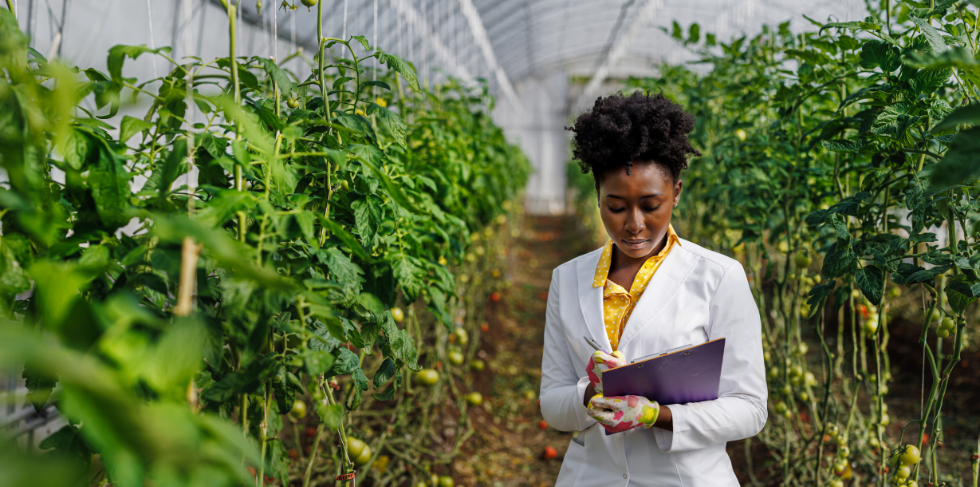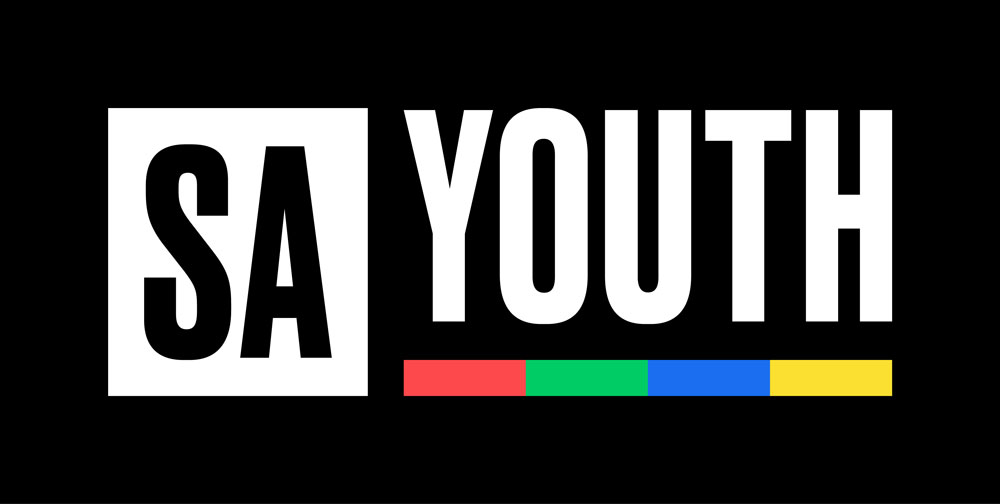Young people in South Africa are playing a never-ending waiting game – waiting for the economy to grow, for their luck to turn. The situation is dire. Every second South African aged between 18 and 34 is not in education, employment or training – that’s nearly nine million young people, the population of Austria. That’s a lot of young people waiting for the economy to turn the corner.
And it’s not as though simply fixing GDP growth will turn South Africa into a jobs-rich economy. Analysis of GDP growth rates over the past 15 years suggests that, while overall jobs do grow with GDP growth, young people are still left out. In fact, despite slender job gains during the GDP growth cycle of 2011 to 2015, and the post-Covid bounce-back, they are still left behind compared with older workers.
Against this backdrop, some argue that until we build the economy we want – one of plentiful, secure, accessible entry-level jobs, and the potential to grow them into higher-level jobs – there’s little point in investing in work interventions. But a deeper look at the data shows that view is not only wrong but dangerous for today’s youth.
It leads to what Professor Ariane de Lannoy refers to as waithood, “an anthropological concept expressing that young people really want to move towards independent adulthood, but there is a stage where they simply get stuck. And this stuckness is not static sitting and waiting, there is a lot happening: young people are hustling to create a livelihood, or reconnecting to education or to the labour market or making decisions for themselves”. It is vital we keep young people moving, strategically and with support, within the economy we have – not letting them stagnate, waiting for the economy we want. If we get that right, it means we will also have a workforce that is trained, eager and ready to go when the economy does pick up. This turns the undeserved inertia of our youth into positive momentum when jobs return.
Young people are working harder than ever for any chance to work. Since 2014, the number of youth actively searching for work has increased by six percentage points. This energy is driving increased zig-zagging within the economy. Of 3.8 million young people on the SA Youth platform, only 10% to 15% stay employed and are sustainably employed, with 30% to 40% churning in and out of work.
In the absence of enough stable, long-term employment, this zig-zagging and circulation is a good thing. It provides essential non-income-related benefits, such as improved mental health and providing structure to people’s lives. Every part of the economy has a role to play, acting as a stepping stone, signpost or safety harness at different times on a young person’s journey. But importantly, reducing friction during this zig-zagging helps young people retain self-confidence and self-esteem, and moves them onto a forward trajectory that builds their employability, which will, in turn, propel the economy forward when it does pick up.
The prize of a formal sector job, with stable, well-paying work, is unfortunately reserved for fewer than 20% of those entering the labour market – often with hidden penalties for those from disadvantaged backgrounds. Even with good matric results, education in a quintile 1 to 3 school decreases the likelihood of being employed: all else equal, there is a five-percentage-point penalty between young people in quintile 1 and 5. Women are 6% less likely to find work – and even when they do, face an earnings penalty of 6%. This is why jobs in the formal sector, scarce as they are, need to prioritise inclusive hiring where possible.
To address this imbalance, youth employment accelerator Harambee has developed alternative assessment proxies to identify the 20% of young people in our network with high potential but poor matric results. Through these screeners, we have been able to double, from 12% to 25%, the proportion of applicants who we can confidently recommend for opportunities, but who have a traditionally weak profile. These steps, if adopted by a wider number of first-time employers, can help break the intergenerational cycles of poverty.
Once hired, we need to prioritise investment in our youth. Our research has shown that if a young person has been employed for a year, the probability of them having a job in a year’s time is double that of someone who has worked for only 30 days. Harambee partner Nando’s South Africa has committed to using SA Youth to hire entry-level talent for all their corporate stores. Nando’s recruits young people by catchment area to ensure each employee lives only one taxi ride away from their workplace, and provides dedicated transport for staff working late shifts. Between March 2023 and May 2024, 77% of Nando’s total entry-level placements came from the SA Youth network. With a high internal promotion rate, the company aims not only to employ young South Africans but also to nurture them into future managers.
Furthermore, while GDP growth rate is important, inclusive job growth should be a priority – which can create jobs that young people can easily access. The global business services sector has demonstrated this time and time again over the past several years, providing 20%-plus growth rates and nearly 100,000 new jobs. But formal sector employment will never be enough for the millions waiting in the queue.
With few formal sector jobs and the high volatility of the informal economy, public employment programmes, such as the Presidential Employment Stimulus and National Youth Service – which have demonstrated hiring efficiency, inclusion and improved pathway management – are vital to keep young people productive and engaged, and to foster social cohesion. This is particularly the case in rural areas which are often “jobs deserts”. Youth in rural areas are four times more likely to engage in public employment programmes than in the formal sector, compared with young people in urban areas who are only 1.5 times more likely to do so – providing vital work opportunities to stave off “waithood”, and critically, providing stable, minimum-wage income to many youth who were not previously earning any income.
The informal economy is the obvious place for many youth to “wait” it out. But it is currently too precarious, too volatile and hard to access. Even so, it remains an important element of an economy that moves. First, young people tell us it is a bridge until they can secure a role in the formal sector or a public employment programme. SA Youth data confirms this: if their first opportunity is in a public employment programme or the formal sector, a young person tends to move to other opportunities within the same sector. By contrast, three-quarters of those in self-employment leave it for a work opportunity in one of the other two sectors.
Harambee’s experience, though, suggests that derisking entry into the informal sector via intermediaries provides valuable scaffolding to youth. For example, access to markets, consistent wages and business mentorship yield more resilient and durable earnings. One such partner is Gobuddy, a green e-commerce delivery service operator. Gobuddy has registered 3,140 individuals on its platform, of which it estimates that 90% are from the SA Youth network. Our data suggests that salaries for these types of partner opportunities range between R3,000 and R5,000 per month, with an average duration of 12 months. This is in comparison with the R700 to R900 earned and a 4.9-month duration experienced with more survivalist self-employment activities.
Last, it is expensive to look for work. We know that keeping youth searching and engaged in the job market is associated positively with employment. Youth Capital’s Beyond the Cost reports show that youth spend nearly R1,500 looking for work – either on transport, data or application costs – and this is particularly true among those from lower-resourced backgrounds. We need to reduce work-seeking costs system-wide. While work-seeking costs inhibit engagement, good-quality support and active pathway management increase it dramatically – by more than 100% in our network – which in turn improves work outcomes. Handling an average of 65,000 calls with young work-seekers every month, SA Youth’s call centre is a rich source of insight into what makes the difference: a conversation with a human that provides pragmatic and personalised guidance to a young person.
Findings of the Basic Package of Support pilot confirm this: the programme reaches out to young people who may have become disconnected and discouraged and offers them face-to-face, individualised coaching support, peer support and a non-judgemental, caring and supportive space to visit. Coaches work with young people to develop longer-term action plans based on their aspirations, skills and needs, and then help to connect them to relevant services in their communities.
The emotional distress among many of South Africa’s youth is visible in the almost 40% of young people who enrol in the programme and present with possible generalised anxiety disorder. But among those who complete just three coaching sessions, this number decreases by almost 15 percentage points.
Read more in Daily Maverick: Giving jobless young people an in into the labour market via short-term public employment
While more than a quarter of young people indicated not accessing any services in their community because they expected they would not be helped, that number dropped by 18.35 percentage points after the third coaching session. This is important, because making sure that young people feel they have access to services, knowing when and how to access these, ensuring that all their documents are up to date and providing them with a sense of forward movement in life, means we can help strengthen their well-being and employability. The programme has also demonstrated significant and positive shifts in young people’s orientation towards, and uptake of, education, training and employment opportunities.
In the absence of an economy that grows, we can create an economy that moves, and importantly, an economy that moves young people forward, so they can themselves be the gears with which our rebounding economy can grow. By increasing momentum between opportunities we can ensure the vast majority of youth will work at least once before the age of 30. Momentum will come from improving access to the jobs of today, enabling short-term work experiences to be more effective and available to young people, and making opportunities visible and accessible, improving transitions between them through pathway management. South Africa’s youth should not wait any longer. Their time has come. DM

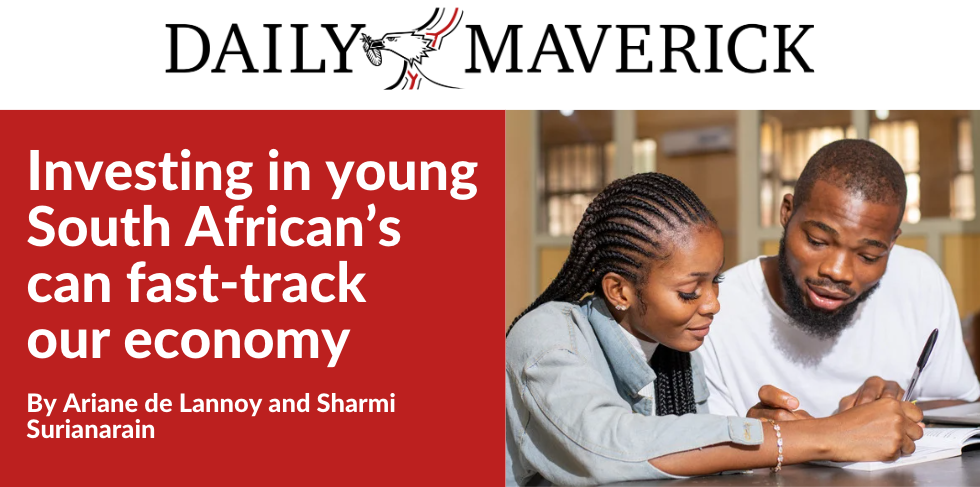
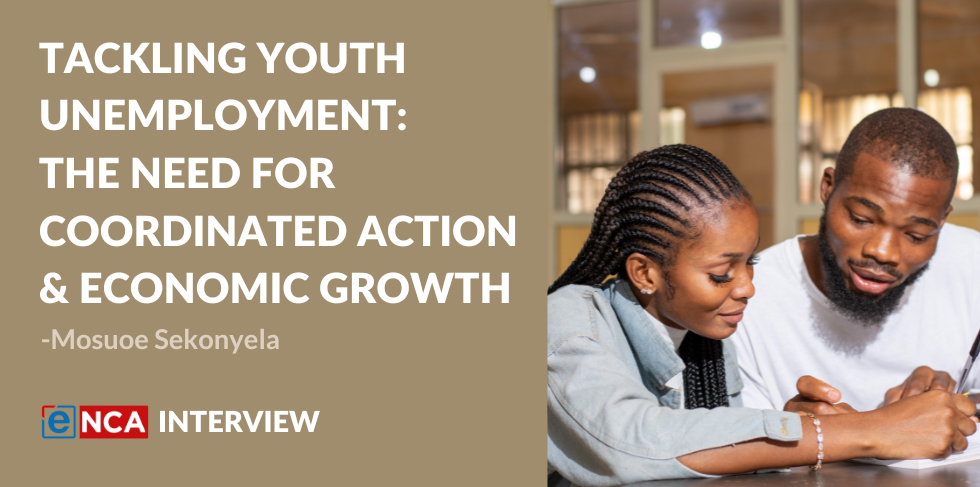
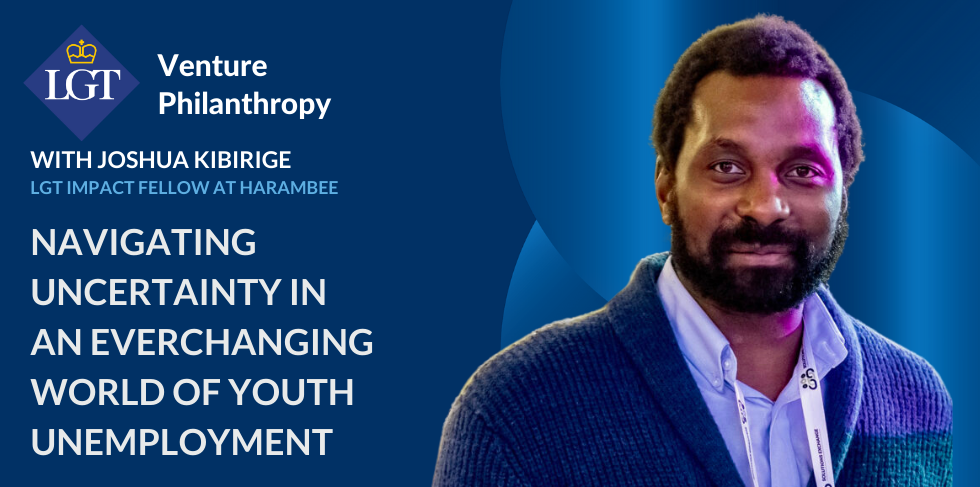

 Stay Connected
Stay Connected